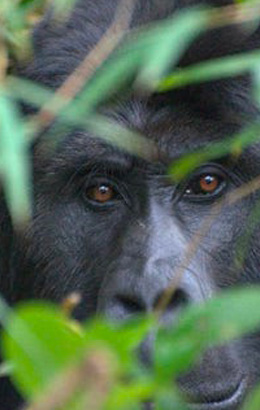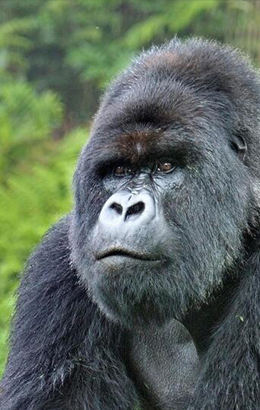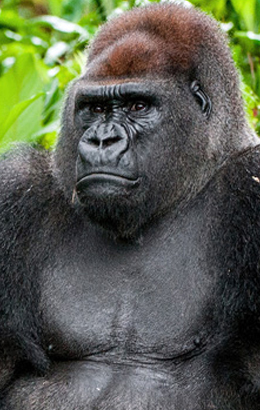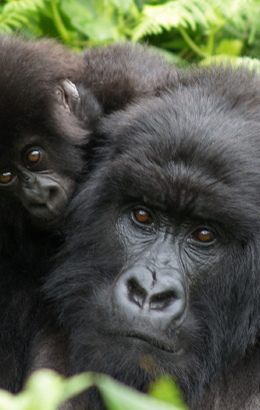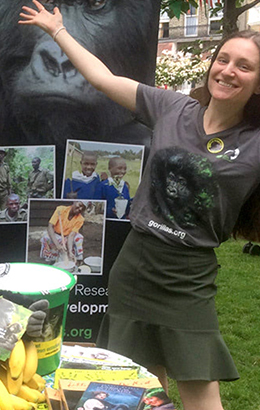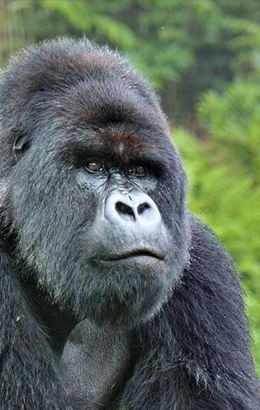Transboundary conservation formalised with a Treaty!

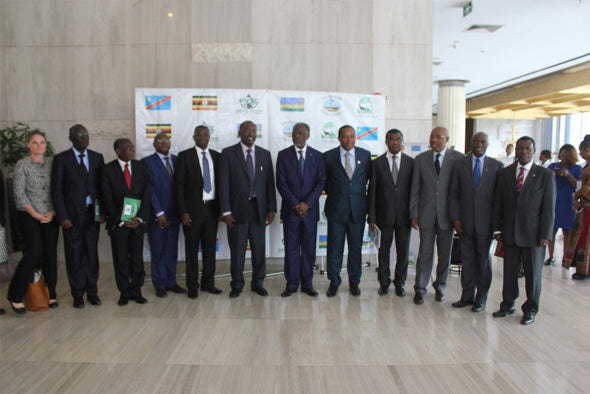
At the end of the meeting of the Council of Ministers of the large cross-border collaboration in the Virungas region, and I was there to witness this important development.
The signing of this treaty was reached after ten long years of negotiations! The idea of all three countries (Rwanda, Uganda and DR Congo) coming together was inspired by the Kwitonda group of mountain gorillas. For years, they have been wandering between Rwanda and Congo, as have the Nyangezi family and many other individuals. As Dr Muamba Tshibasu, Executive Secretary of the cross-border collaboration scheme explained at this meeting, the gorillas need no visas and will just go where they want, so shouldn’t our efforts to protect them be similarly free from national boundaries?
Also in attendance on the big day were the Ambassadors of the Netherlands and Norway. They watched as the Treaty, which formalises the collaborative conservation efforts that have we have been carrying out for many years now. The Treaty also formalises our ongoing efforts to share the benefits of tourism and to work together to attract new tourists to the region, not only to see the gorillas, but to enjoy everything else the Virungas has to offer.
François Kanimba, Minister of Trade and Industry of the Republic of Rwanda welcomed the outcome of the process of formalization of cross-border cooperation through the signing of the Treaty and stressed that it is an important instrument for regional integration, which will significantly contribute to safeguarding the common heritage to the people of three countries of the Greater Virunga.
Meanwhile, the governor of North Kivu, Julien Paluku Kahongya, in an interview to the press, welcomed the outcome of the process leading to this signing, while the Minister of Tourism of the Democratic Republic of Congo and the Honorable Minister of Commerce and Industry of the Republic of Rwanda today signed the Treaty on the Greater Virunga Transboundary Collaboration of the Wildlife Conservation and Wild Flora and Tourism Development, which will be sent through diplomatic channels to signing their counterpart Honorable Minister of Tourism, Wildlife, Wild Flora and Antiquities of the Republic of Uganda.
So, what does the Treaty guarantee? Without going into too much detail, it:
Recognizes the need to conserve transboundary protected areas through collaborative management for the benefit of present and future generations of the Democratic Republic of Congo, the Republic of Rwanda and the Republic of Uganda;
Is aware that the Central Albertine Rift which includes the Greater Virunga is one of the most biologically diverse ecological regions; precious and fragile the world, providing a healthy and safe except for rare and endangered wildlife and wild flora protection under national and international law.
Affirms that States have sovereign rights over their wild flora and fauna and responsibility relating thereto retain and use those resources sustainably;
Reaffirms the need for cooperation among States in relation to the management of natural resources and development of tourism, information sharing on the conservation of fauna and flora, tourism and building national capacities.
Additionally, the Transboundary Collaboration Framework Greater Virunga governed by this Treaty is based on the following guiding principles:
- Respect for the sovereignty and territorial integrity of States Parties;
- A status and equal treatment for all States Parties;
- Poverty reduction and sustained improvements in living standards;
- Sustainable development;
- The participation of the community;
- Decision-making based on surveys.
The objectives of the Greater Virunga Transboundary Collaboration are:
- To promote and coordinate biodiversity conservation and other socio-cultural values within the network of protected areas of Greater Virunga mentioned in Article 3;
- Developing strategies for transboundary management of biodiversity;
- To promote and ensure harmonized planning as well as monitoring and evaluation of the implementation of cross-border programs of conservation and development;
- Promote and coordinate tourism development programs in the Greater Virunga Landscape;
- Ensuring sustainable financing for the management of the network of transboundary protected areas to promote the conservation of biodiversity and the development of tourism in the Greater Virunga Landscape;
- Strengthen and harmonize the production and sharing of knowledge, experiences and best practices for good decision-making;
- Promote and enhance natural resources and safety of tourists in the Greater Virunga Landscape;
- Engaging in any other activity for achieving the objectives of the Treaty.
Regarding Obligations of Member States, the Treaty states:
- Keep the fauna and the flora and develop sustainable tourism in Transboundary Protected Areas in relation to the jurisdiction of each State Party;
- Take care and be responsible for migratory species at the time of their presence in the jurisdiction of each State Party;
- Share information for the conservation of wildlife and tourism development in the Transboundary Protected Areas;
- Participate in annual fees in connection with financial and other resources required for the implementation of this Treaty;
- To adopt, wherever possible, common positions in respect of treaties, conventions, and regional and international agreements and other protocols related to this Treaty;
- To appoint representatives to national implementation of this Treaty;
- Participate in joint marketing of tourism, research, monitoring of flora and fauna, conservation and development of tourism as well as wildlife management initiatives and flora and other activities required to achieve the objectives of this Treaty.
The treaty specifies the bodies of the GVTC, the funding of the latter and reserves, the effects on other international laws and obligations without omitting the modalities of accession of new members. It comes into force ninety (90) days after the deposit of instruments of ratification by all States Parties.
So, this may not be the most exciting blog post I’ve written for you, but, I can certainly say it’s one of the most important. Plus, given the importance of cooperation in conservation, it’s one of the most exciting for myself and my colleagues. Improved cooperation will help ensure we channel as much energy as possible into safeguarding flora and fauna, including, of course, our wonderful gorillas, and that the efforts and the rewards and divided up fairly.
